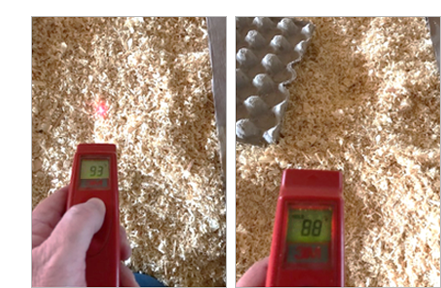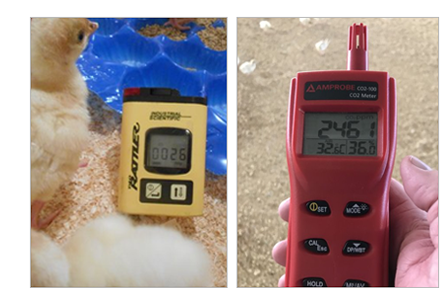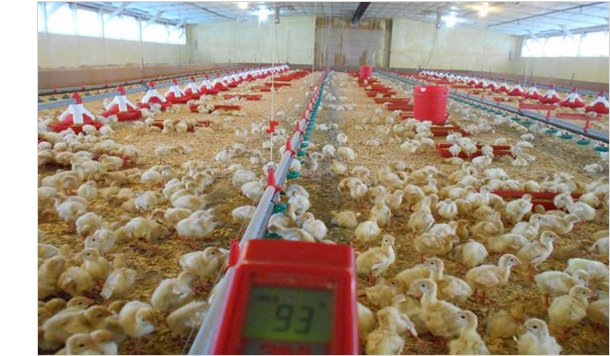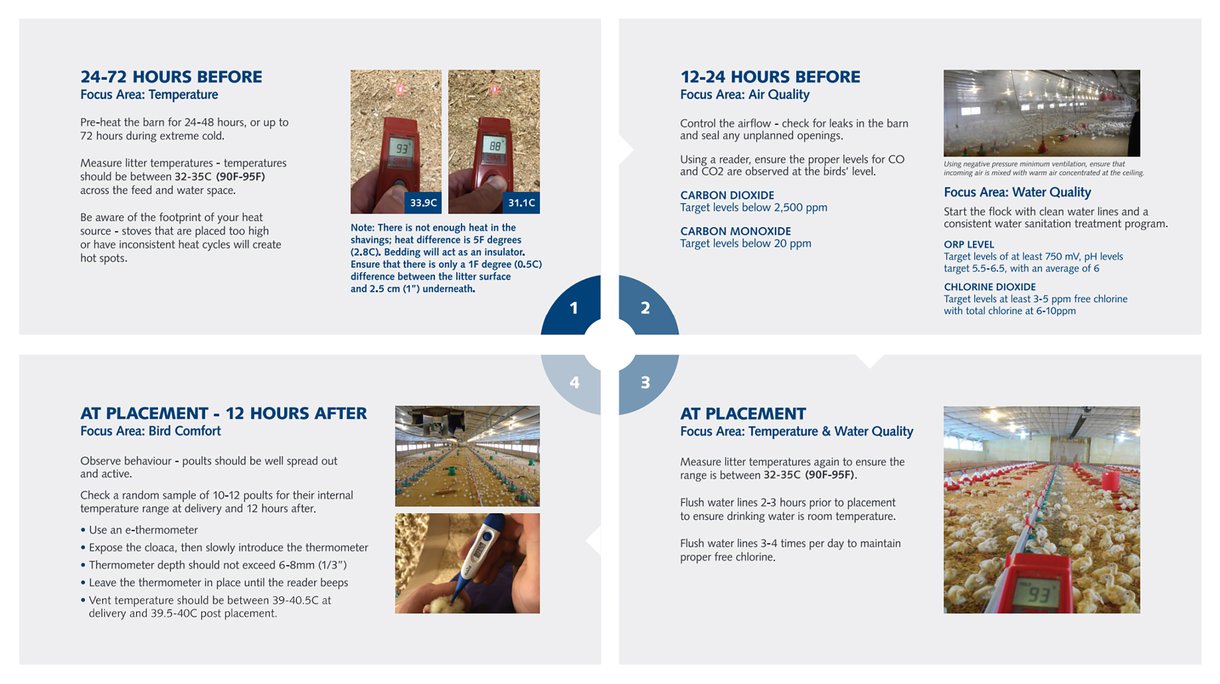Preparing for placement
Preparing for poult placement can be hard work, requiring careful attention to detail. The steps can begin up to 72 hours in advance of poult placement. First begin with a clean, sanitized barn by reviewing our resources on biosecurity.
Click here to review our resources on biosecurity
With these tips in mind, the long term benefit of strong flock performance will be well worth the effort.
24-72 hours before
- Pre-heat the barn for 24-48 hours or up to 72 hours during extreme cold.
- Spread fresh litter across the brooding area.
- Measure litter temperatures - temperatures should be 32°C-35°C (90°F-95°F) across the feed and water space.
- Be aware of the footprint of your heat source - stoves that are placed too high or have inconsistent heat cycles will create hot spots.
- To test that the heat has been built into the litter, measure the top of the litter surface then push away about 2 cm (1") of the litter. Measure this lower layer. There should only be 1°F (0.5°C) difference between the top and lower layer. If the difference is more than this, continue to heat the barn until heat has built into the litter.

12-24 hours before
- Control the airflow of ventilation in the barn. Seal any unplanned openings. For more information on proper barn ventilation, click here.
- Using a reader, ensure levels of carbon dioxide and carbon monoxide are at the recommended level.
- Carbon dioxide: < 2,500 ppm
- Carbon monoxide < 20 ppm
- Start the flock with clean water lines and a consistent water sanitation program. For more information on water sanitation, click here.
- Set up your lighting program schedule. Start your poults with at least 60 lux of light for 24 hours. Decrease the amount of light in the barn for 1 hour per day, until you reach day 7. From day 8 on, schedule 6-8 hours of darkness per day in order to give the birds a decent rest at night. Click here to learn more about lighting.

At placement
- Flush the water lines 2-3 hours before placement to ensure the drinking water is room temperature.
- Measure litter temperatures again to ensure the range is between 32°C-35°C (90°F-95°F) across the feed and water space.


